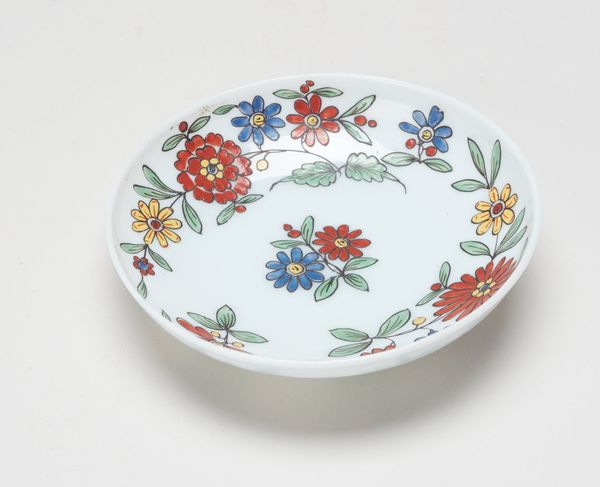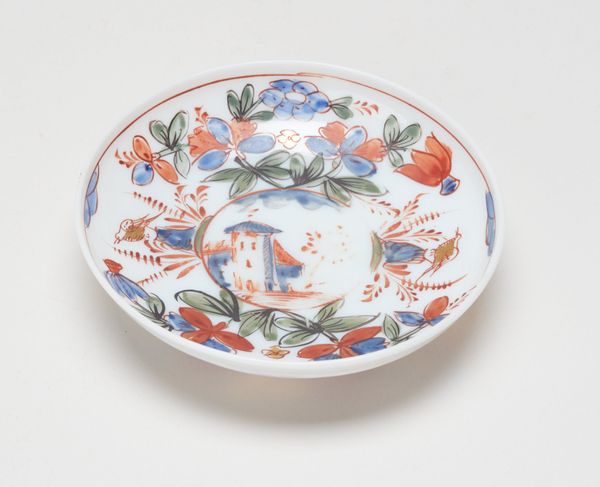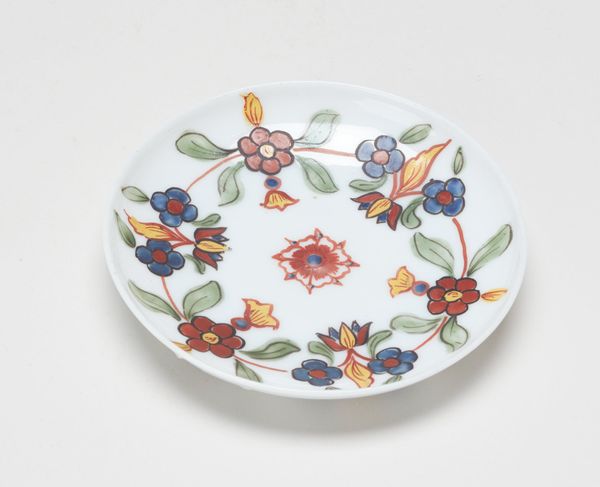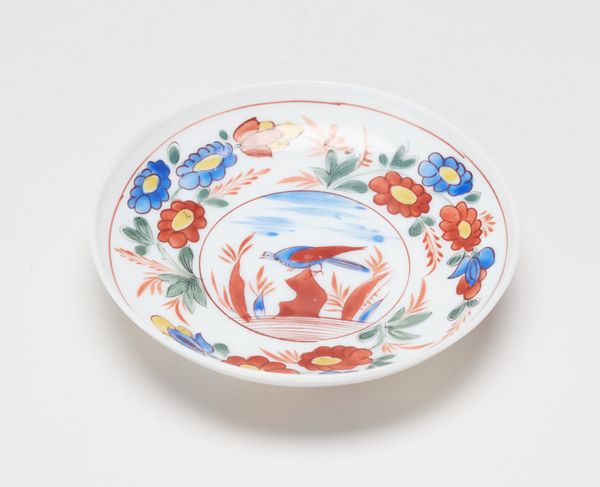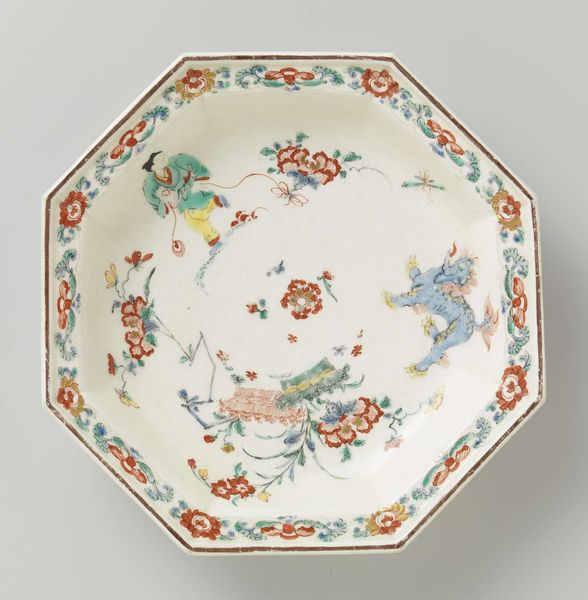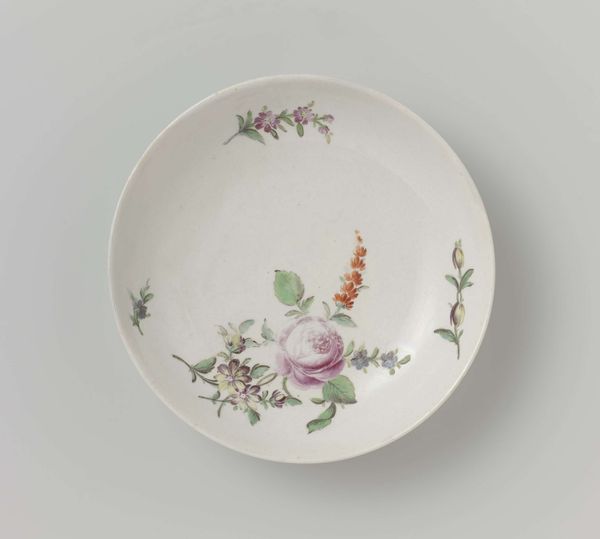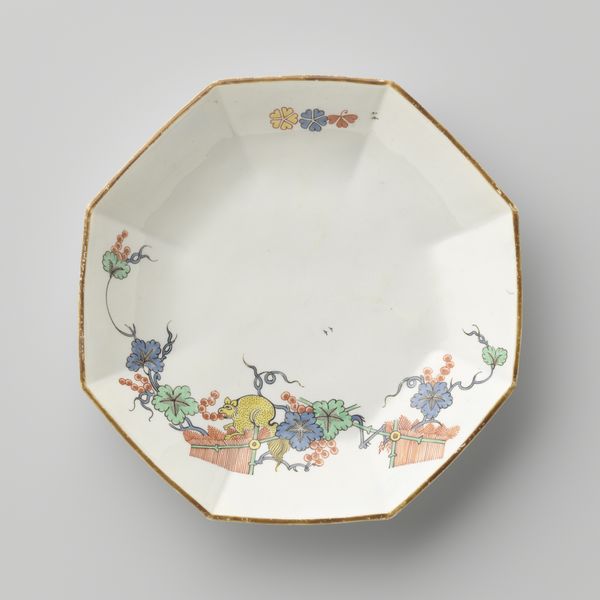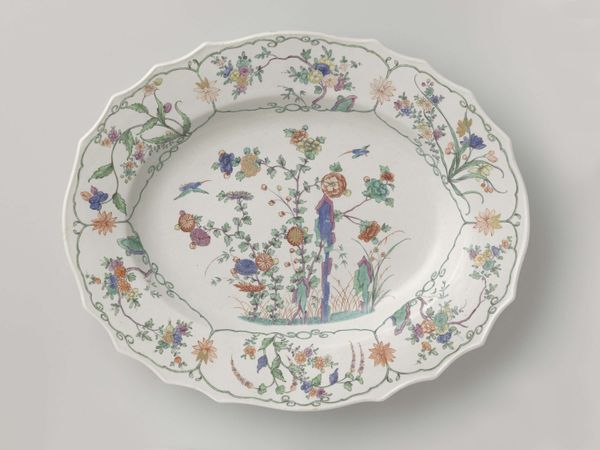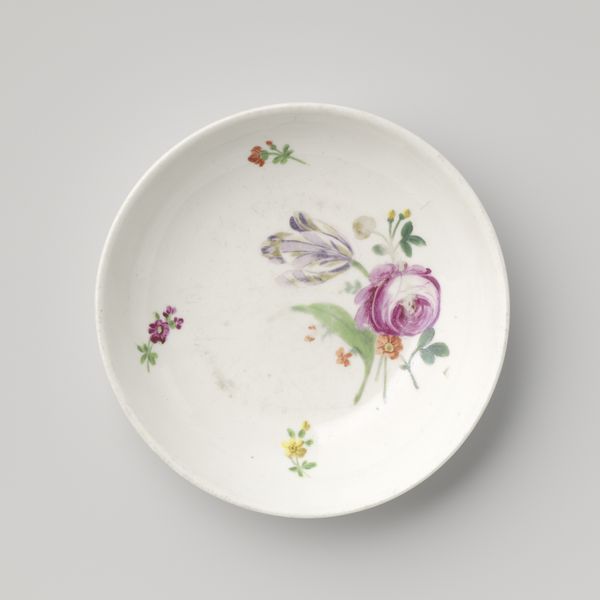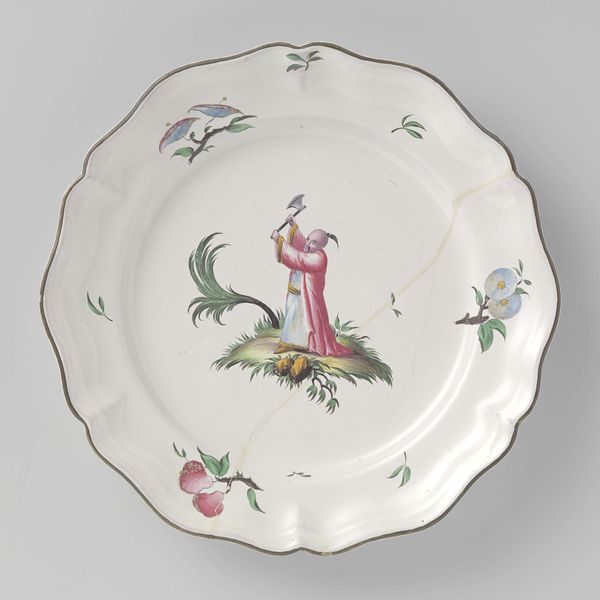
painting, ceramic, glass, enamel
#
pottery
#
painting
#
ceramic
#
glass
#
food illustration
#
enamel
#
ceramic
#
decorative-art
Dimensions: 1 x 5 x 5 in. (2.5 x 12.7 x 12.7 cm)
Copyright: Public Domain
Editor: Here we have an 18th-century saucer by an anonymous artist, crafted from ceramic, enamel and glass with painted decorations. It strikes me as quite charming in its simplicity. What’s your perspective on it? Curator: The key here is understanding the object as the result of labor and access to specific materials. The ceramic body itself speaks volumes about trade routes and access to the kaolin clay necessary for its production. Do you see the marks left from the painter? Editor: I do. They seem intentionally naive. Was this kind of painting considered craft, art, or something in between back then? Curator: That's a crucial question! The production of decorative arts like this involved specialized workshops, often with a division of labor. Some workers formed the object, others applied the enamel and painted the decoration, indicating levels within the labor force. We can analyze this hierarchy of labor. Think about what these roles mean to the finished object. How might its function influence its design? Editor: So the function of a saucer dictated not only its shape but the kind of artistic labour that was deemed appropriate. The fact it’s made for the table, rather than display, affects the visual complexity. It's everyday art. Curator: Precisely. We can analyze how such objects reinforced social hierarchies of consumption. This piece provides insights into 18th-century European trade, artisanal labor practices, and class structures surrounding domestic life. It’s so much more than just a pretty design, right? Editor: I agree. Seeing it as a product of labor, material availability, and consumption really opens it up to broader interpretations. Curator: Exactly. Now you’re looking at the means of production that have defined the value, beyond aesthetics alone!
Comments
No comments
Be the first to comment and join the conversation on the ultimate creative platform.
